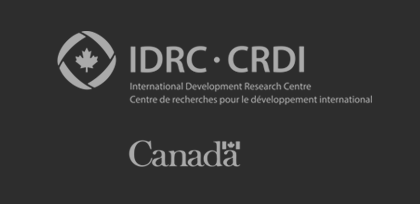OWSD NIGERIA NATIONAL CHAPTER PRESENTS The Human Gut Microbiome: Role in Health and Development
October 13, 2022
OWSD Nigeria National Chapter University of PortHarcourt Branch Series of Scientific Communications: Obakpororo Ejiro Agbagwa on The Human Gut Microbiome: Role in Health and Development
The Human Gut Microbiome: Role in Health and Development
By
Obakpororo Ejiro Agbagwa
Introduction
Scientist estimates that about 100 trillion microbes are found in the human body and that most of these organisms are within the gastrointestinal tract (GIT). The species of organisms found within the GIT (intestines) are referred to as the gut microbiome (GM). Most of these organisms are beneficial to human health while others can cause disease and malfunctioning of the body (Integrative HMP (iHMP) Research Network Consortium). They have the ability to affect the physiologic functions of the body. A healthy gut consists of the phya Bacteroidetes, Firmicutes, Actinobacteria, and Proteobacteria in abundance, while Akkermansia, Bifidobacterium, and Escherichia are less abundant. It is important that there is a balance between the beneficial and harmful microbes within the gut so as to maintain good health, the development of the human body, and disease prevention. The imbalance and/or dysbiosis of the gut microbiome is linked to inflammatory bowel disease, irritable bowel syndrome, allergy, obesity, colon cancer, mental illness, and other diseases (Thursby and Juge, 2017). This presentation reviews the role the human GM plays in maintaining health and development.
Development of the Gut Microbiome
The human GM begins its development from the utero when the GT is exposed to microbes. The diversity of species in the fetus in the womb is low due to limited colonization with microbes. (Bäckhed et al., 2015). After birth, the GT diversity of species begins to increase as the infant gets in contact with microbes via the channel of birth, illness, antibiotic treatment, environmental factors, and feeding. At this stage, the GT is characterized by lactobacilli (vaginal delivery) and Bacteroides genus (C- Section) (Rodriguez et al., 2015; Avershina et al., 2014). Infants born by vaginal delivery are exposed to the mother's bacteria at birth, this influences the infant's gut bacteria and stimulates white blood cells and other components associated with the immune system (Kulas et al., 2013). As adulthood sets in the diversity of species present in the GT become stable and distinct with lower levels of Bacteroides and higher levels of Bifidobacterium (Hollister et al., 2015)., but can be affected by several factors and old age.
Roles of the Human Gut Microbiome
A healthy human GM assists in determining the health status of an individual, through interaction with the brain. It plays a major role in health promotion, development, and disease prevention in the human body. One of the several roles of the GM is the ability to ferment carbohydrates, especially the non-digestible fibers which produce short-chain fatty acids (SCFAs) useful to maintain a healthy gut. Examples of SCFAs are acetate, propionate, and butyrate. Acetate is the most abundant of the three and its produced by most gut anaerobes, whereas propionate and butyrate are produced by different subsets of gut bacteria following distinct molecular pathways ( Louis and Flint, 2017). Acetate is also involved in the regulation of metabolism in extra-intestinal tissues including cholesterol metabolism and lipogenesis. Butyrate is an important energy source for the cells that make up the inner lining of the human colon (colonocytes). When SCFA is lacking it can lead to microbiome-related problems such as the leaky gut and local inflammation. Butyrate has been linked to several important functions such as the ability to induce apoptosis of colon cancer cells and activation of intestinal gluconeogenesis which is relevant for energy balance and diabetes. Propionate is important for glucose homeostasis as it regulates gluconeogenesis in the liver and is involved in satiety signaling (Morrison and Preston, 2016; Lin and Zhang, 2017).
Human GM takes part in enzyme production, and digestion of food defends against opportunistic pathogens and supports intestinal immune function and modulation. The GM regulates brain function through tryptophan metabolism which in turn affects human behavior (Cheolmin and Yong-Ku, 2021). Bidirectional communication between the brain-gut axis through the gut and the brain via the immune and endocrine systems. This is regulated through the metabolism of microbiome-derived neurocompounds and tryptophan which is beneficial in nerve development. But when there is a microbial imbalance in the human GM this can lead to neuropsychiatric illnesses such as depression and schizophrenia. Stress has also been shown to influence the integrity of the gut epithelium and to alter peristalsis, secretions, and mucin production. When this occurs the habitat of the intestinal microbiota is altered and thus promotes changes in microbial composition and metabolism of GM (Foster and McVey Neufeld, 2013). There is a link between the gut microbiome and mental health. Recent studies have shown that intestinal microbiota can affect the brain’s normal function and development. This was studied by comparing bacterial composition in children with ADHD and those without ADHD or autism. The researchers confirmed that the bacterial composition in children with ADHD was different from those without.
Conditions linked to Dysbiosis in the Human Gut Microbiome
Dysbiosis of the human GM can lead to irritable bowel syndrome (IBS), Inflammatory bowel disease (IBD), chronic liver disease, peptic ulcer disease, Clostridium Difficile infection, Celiac disease, diverticular disease, persistent antibiotic-induced colitis and GI cancers. GM microbial imbalance is also linked to metabolic disorders (Type 2 diabetes and obesity and those associated with the brain such as autism, anxiety/ depression, narcolepsy, and dementia. IBD is associated with alterations in the gut microbiota, though it is not clear if microbial changes contribute to disease pathogenesis or develop as a result of local inflammation (Kostic et al., 2015). IBD is a group of long-term inflammatory conditions that affect the digestive tract.
Antibiotic intake alters the composition and magnitude of the gut microbiota, reduces species diversity, and eliminates antibiotic susceptible species thereby stimulating antibiotic resistance. Antibiotic-induced alterations in the GM cause persistent antibiotic-induced colitis which can reduce colonization resistance against the spore-forming, toxin-producing pathogen Clostridium difficile (Theriot et al.,2014).
Maintaining a Healthy Human Gut Microbiome
There are factors that impact negatively GM, they include diet, pharmaceuticals, geographical locations, lifecycle stages, the birthing process, infant feeding method, and stress. These factors have a negative effect on the health of GM. These negative factors can be worked upon to maintain a healthy GM. Diet is a factor in maintaining a healthy GM, it is advisable to consume food that is high in fiber. In the diet fermented food, prebiotics and probiotics should be included daily. More food with highly resistant starch such as oats, green bananas, cooked potatoes, and legumes should be eaten. A high-fat diet can lead to gut microbiota dysbiosis, which leads to increased gut permeability and metabolic endotoxemia. When this occurs it in turn contributes to low-grade inflammation and insulin resistance and, ultimately, obesity, diabetes, and other metabolic disorders.
Lifestyle factors are associated with the daily life of an individual. Excessive consumption of alcohol should be avoided, everyday stress should be controlled. Drinking enough water and self-medication with antibiotics should be avoided.
Conclusion
In conclusion, the importance of GM can not be overemphasized. It is important in health and development because of the trillion diversity of microbial communities found within the gut. Individuals are encouraged to maintain a healthy gut microbiome through a healthy diet and healthy lifestyle.
References
- Avershina E., Storrø O., Øien T., Johnsen R., Pope P., Rudi K. (2014) Major faecal microbiota shifts in composition and diversity with age in a geographically restricted cohort of mothers and their children. FEMS Microbiol. Ecol. 87, 280–290 doi: 10.1111/1574-6941.12223
- Bäckhed F, Roswall J, Peng Y, et al. Dynamics and Stabilization of the Human Gut Microbiome during the First Year of Life [published correction appears in Cell Host Microbe. 2015 Jun 10;17(6):852. Jun, Wang [corrected to Wang, Jun]] [published correction appears in Cell Host Microbe. 2015 Jun 10;17(6):852]. Cell Host Microbe. 2015;17(5):690-703. doi:10.1016/j.chom.2015.04.004
- Cheng J., Ringel-Kulka T., Heikamp-de Jong I., Ringel Y., Carroll I., de Vos W.M., Salojärvi J., and Satokari R.. 2016. Discordant temporal development of bacterial phyla and the emergence of core in the fecal microbiota of young children. ISME J. 10:1002–1014. 10.1038/ismej.2015.177
- Cheolmin S and Yong-Ku K. The Complex Interplay Between Gut-Brain, Gut-Liver, and Liver-Brain Axes. Chapter 3, The interactions between gut and brain in psychiatric and neurological disorders. Academic Press, 2021, Pages 49-65, ISBN 9780128219270,
- Foster JA, McVey Neufeld KA. Gut-brain axis: how the microbiome influences anxiety and depression. Trends Neurosci. 2013;36(5):305–312.
- Hollister E.B., Riehle K., Luna R.A., Weidler E.M., Rubio-Gonzales M., Mistretta T.A., Raza S., Doddapaneni H.V., Metcalf G.A., Muzny D.M., et al... Structure and function of the healthy pre-adolescent pediatric gut microbiome. Microbiome. 2015; 3:36.]
- Integrative HMP (iHMP) Research Network Consortium. The Integrative Human Microbiome Project: dynamic analysis of microbiome-host omics profiles during periods of human health and disease. Cell Host Microbe. 2014 Sep 10;16(3):276-89.
- Kostic AD, Xavier RJ, Gevers D. The microbiome in inflammatory bowel disease: current status and the future ahead. Gastroenterology. 2014; 146(6):1489–99. PubMed PMID: 24560869.
- Lin L. and Zhang J. (2017) Role of intestinal microbiota and metabolites on gut homeostasis and human diseases. BMC Immunol
- Louis P, Flint HJ. Formation of propionate and butyrate by the human colonic microbiota. Environmental microbiology. 2017 Jan;19(1):29-41.
- Morrison D.J. and Preston T. Formation of short chain fatty acids by the gut microbiota and their impact on human metabolism. Gut Microbes 7, 2016; 189–200 doi: 10.1080/19490976.2015.1134082
- Rodriguez J.M., et al. (2015) The composition of the gut microbiota throughout life, with an emphasis on early life. Microb. Ecol. Health Dis. 26, 26050 Rodriguez J.M., et al. The composition of the gut microbiota throughout life, with an emphasis on early life. Microb. Ecol. Health Dis. 2015; 26, 26050
- Thursby, E., & Juge, N. Introduction to the human gut microbiota. The Biochemical journal, 474(11), 2017; 1823–1836. https://doi.org/10.1042/BCJ20160510
- Theriot C.M., Koenigsknecht M.J., Carlson P.E. Jr., Hatton G.E., Nelson A.M., Li B., Huffnagle G.B., Z Li J., and Young V.B. Antibiotic-induced shifts in the mouse gut microbiome and metabolome increase susceptibility to Clostridiumdifficile infection. Nat. Commun, 2014.
- Kulas T ,Bursac D, Zegarac Z , Planinic-Rados G , Hrgovic Z . New views on cesarean section, its possible complications and long-term consequences for children's health
. Med Arch 2013 ; 67:460–3











































